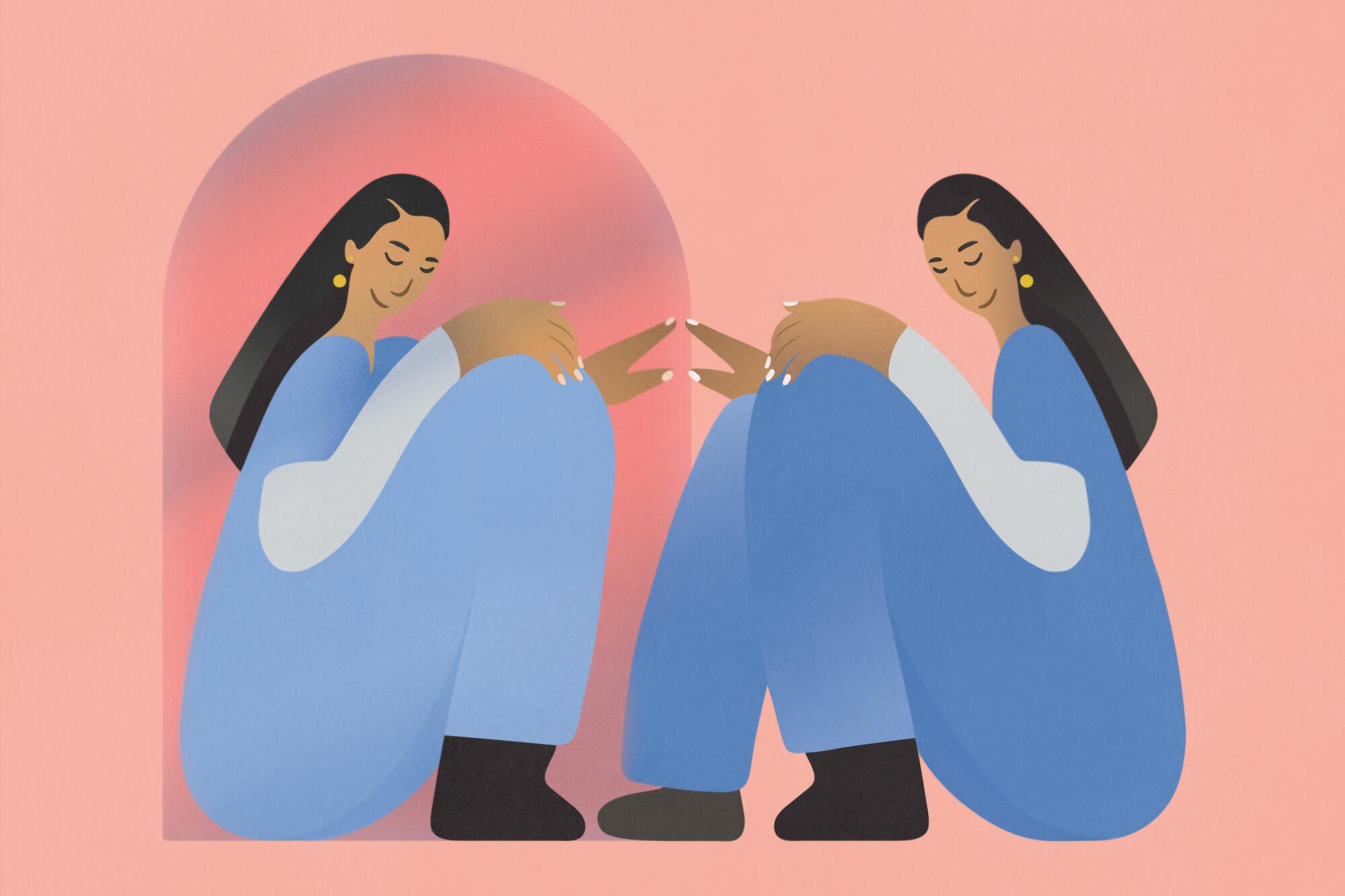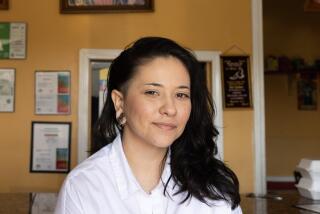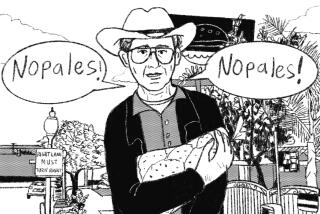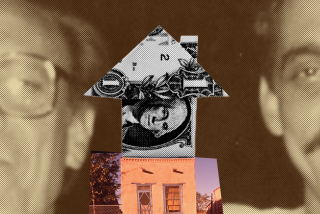
Leslie Gonzalez’s path to becoming a doctor was filled with overwhelming pressure, stress and anxiety. Classroom struggles, the challenge of juggling a part-time job and schoolwork — Gonzalez labeled herself a failure. And on top of that, she felt the pressure of being one of the only Latinas in her medical school setting.
“A lot of impostor syndrome came into play, and I would often feel stressed out and anxious. I would call my parents and tell them, ‘I’m so done with this’ and just have one of those breakdowns,” she said.
Those feelings were always followed by a crushing wave of guilt. Gonzalez, a child of immigrant parents, would tell herself to “pull it together because [she] had to make [her] parents’ sacrifices worth it.” She couldn’t cope with these feelings.
At the time, Gonzalez was studying osteopathic medicine at Western University of Health Sciences in Pomona and sought professional help from one of the school’s therapists. Through nine months of therapy sessions, she learned that her pressures came in part from her position in her family.
“A lot of it was because I was put on a pedestal for a very long time due to being the first born and having so much responsibility,” Gonzalez said.
The pandemic has affected Latinos from all walks of life, attacking their families, their health as well as their financial well-being. The impacts will be felt for generations, and have implications for all Californians.
As the oldest of four children, Gonzalez’s dad referred to her as the leader of the pack. She set the standard for what her siblings could achieve academically and personally. She describes herself as the advocate for her family.
Gonzalez and others in the Latino community are taking to social media to share their understanding and experience of first-generation trauma. It’s a colloquial term some Latino Americans use to describe the emotional struggles of children whose parents are immigrants.
There are differing definitions of who is considered “first generation,” often dependent on whether they are born outside the U.S. or have citizenship. But Gonzalez and others are bonding over a shared experience.
Gonzalez shares her point of view about her traumas on TikTok and Instagram. Gina Moreno talks about breaking the cycle of self-neglect as a first-generation Latina on TikTok. Erika Cruz talks about the dependency that immigrant parents have with their first-generation children.
What connects these struggles is that they affect children of immigrants — typically but not always the first born, and the first to navigate certain aspects of American society. According to mental health professionals, these experiences can range from stressors to traumas and can be caused by experiences inside the home or out in society.
One-on-one therapy sessions gave Gonzalez the space to understand herself, acknowledge her feelings, and develop healthy coping strategies.
For people whose struggles feel similar to Gonzalez’s, The Times asked Southern California trauma therapists and an academic about how to define first-generation trauma, what causes it and how people can heal.
What is first generation trauma?
The conversation about first-generation trauma is emerging in the Latino community, specifically in social media spaces focused on improving mental health. It tends to be found with the hashtag #firstgen.
In those same spaces are the conversations on generational (or intergenerational) trauma, which differs from first-generation trauma because it is trauma passed down through generations.
There isn’t a definition of the term because it hasn’t been widely explored yet, Manuel Zamarripa director and co-founder of the Institute of Chicana/o/x Psychology said.
It’s more about the specific experience of the children who struggle to reconcile the culture clashes between American society and their immigrant households.
“Stress” could be a more appropriate word than “trauma,” some experts said. They cite the Substance Abuse and Mental Health Services Administration which defines trauma as an event, series of events, or set of circumstances that is experienced by an individual as physically or emotionally harmful or life threatening and that has lasting adverse effects.
“Trauma is a heavy-hitting word,” Zamarripa said.
What is therapy and what happens in a session? What kinds are available? An introduction to a critical tool for better mental health.
He added: “In our effort to educate, we don’t want to promote or perpetuate a narrative that we’re just walking around as individuals that are significantly damaged or traumatized.”
Zamarripa suggests using the terms first-generation trauma or first-generation stress depending on a person’s unique experiences.
Here are some common experiences of children of immigrants that can contribute to first-generation trauma or stress:
Parentification: This is when a child is obliged to act as a parent to their own parent or sibling, perhaps translating at a doctor’s appointment or filing taxes for a parent who doesn’t speak English. “There is a lot of pressure to be that person for your family, so later on, a lot of folks, like first-generation professionals, really struggle with asking for help,” Vanessa Pezo, a licensed trauma therapist based in Long Beach, said.
Gonzalez said before her parents came to the U.S., her mother was studying to be a nurse and her father was a civil engineer in Guadalajara, Mexico, but they didn’t speak English. In the U.S., they took English classes at night. While the classes helped, they still relied on Gonzalez to translate documents that came in the mail or from the doctor.
- Assimilation: The Migration Policy Institute explains assimilation as the integration of people or culture into a dominant culture and society. Agueda Rivas, a licensed marriage and family therapist, said when a child of immigrants begins to navigate the world outside their parents’ home — at school or at a friend’s house, for example — they start to question their parents’ cultural teachings in order to fit in, which can lead to disagreements at home.
- Code-switching: Rivas explained code-switching as a person changing the way they speak, act, or interact with others in specific settings, such as the workplace. Someone who frequently juggles two very different versions of themselves to get by at work, for example, could start to feel emotionally exhausted.
Attachment trauma: This refers to trauma that can occur within family relationships, Pezo explained. “It could be feeling like their needs weren’t met appropriately, not getting emotional support, not feeling as if there was the ability to really connect and feel safe within those relationships maybe because of environmental stressors that were existing at the time,” she said.
In Pezo’s work, clients have said their parents have responded to their emotional distress by saying “te calmas o te calmo” which translates to “calm down or I’ll calm you down.” Or a parent might respond by telling the child “Por que lloras? No llores.” — Why are you crying? Don’t cry. Instead of acknowledging their feelings, the child is unintentionally taught to push it aside.
Zamarripa said that many clinicians talk about first-generation trauma within the context of the family — family relationships and the strife within them. But: “That’s a very Western way of looking at things. In actuality, the kids go to school and the parents go to work outside of the house,” he said.
He argues that a majority of the stressors emanate from external factors. And people bring those experiences, positive or negative, home at the end of the day, and racist rhetoric or negative expectations in the workplace get added to individual stressors.
“It’s important that our community doesn’t continue to internalize this notion of a deficit within our Latinx cultural context,” Zamarripa said. “We should not internalize a narrative or idea that all this comes from within us. A lot of this comes from all the hits that we take outside the family that we don’t realize we’re trying to negotiate when we come together.”

How do these experiences impact your life?
At a young age, some children of immigrant parents had to navigate school, government agencies, or workplaces alone — because they’re the first in their family to do so — so as an adult, it’s not easy to identify the imbalance they’re feeling or ask for help.
Mental healthcare professionals The Times spoke to were unanimous in saying that the result can look like burnout, depression, anxiety, sleep disturbance, impostor syndrome, hyper-independence, physical pain (migraines or stomach aches), or negating your feelings.
Pezo and Agueda said that people have the mindset of working hard and not being able complain because that would mean they’re “malagradecido” — ungrateful.
Gonzalez said the reason her parents made the difficult decision of leaving their lives in Guadalajara was to have better educational opportunities for their future family and eventually build generational wealth in the U.S.
So when Gonzalez struggled in medical school, she ultimately feared letting her parents down.
“Really all that fear came from the pressure that I felt to become someone — to be somebody important in this country who could give back to their parents and make their sacrifices worth it,” she said.
It’s been a rough year, and maybe you are considering therapy for the first, second or fifth time. It takes patience and effort to find the right therapist. Here’s a breakdown of what you need to know.
What you can do
There is no one way, or one right way, to work through traumatic and stressful experiences, and there won’t be a set timeline.
Your journey, Pezo said, will be an individual one and may involve validating your experiences with a therapist or with a trusted person (family member, friend, community leader or religious leader).
Here’s how mental health professionals approach first generation trauma and stress with clients.
Acknowledgment: After talking about your upbringing and any external significant experiences, Pezo works with clients to acknowledge what their parents have done for them and eliminate the idea of blanket respect — the feeling of not being able to criticize your parents because you’ll be seen as ungrateful.
“I do a lot of, ‘We can honor the fact that I love and respect my parents, and I’m so grateful for everything that they did for me to allow me to be the person I am today. And I was also hurt by some of the things they did,” she said.
Open conversations: As you start to understand your lived experiences, Agueda said, you might be interested in talking with your parents about how a certain life event made you feel.
She said these conversations, if you choose to have them, are going to be difficult because each person has their own perspective. During the conversation, if your parent tries to interject with their own experience and say it was worse than yours, Agueda said to see it as a window.
“Come at that with: ‘Nunca me has dicho eso,’” — You’ve never told me that — “and ask them to tell you more about it,” she said.
But parents or guardians might not want to get specific because it’s too painful. Agueda said to approach these discussions with humility and grace.
Learning to cope with setbacks: Gonzalez felt out of balance when dealing with school, societal pressures of becoming somebody, and the inadvertent pressures from her parents.
“I’m so glad I went to therapy, because it really helped me to be OK with the setbacks and failures. It made me realize that it’s part of life,” Gonzalez said.
Healthy boundaries: In her sessions, Gonzalez learned to create healthy boundaries with her parents, who at one time only asked her for help. She continues to help them in any way she can, but her parents ask her siblings now too. She sets a day to talk with her mom on the phone, instead of being available 24/7, and post-graduation, moved into her own home with her partner.
Letting go of blame: Gonzalez doesn’t blame anyone for her mental health challenges, especially not her parents. She said her parents were put in a difficult situation when they came to the U.S., a challenge that many immigrant parents endure.
“I just take it for what it was. It was them trying to figure out how we were going to survive and make life better for themselves and our family,” she said.
Destigmatizing mental health: Zamarripa said part of this healing journey is reframing how we understand mental health struggles.
“It doesn’t mean you’re loco or that’s something is wrong with you,” he said. “It’s what’s happened in your life that’s tipped the scales, and we need to work on getting it back into balance.”
The COVID-19 pandemic has affected nearly everyone’s mental health. If you’re looking for help, here’s a list of resources
More to Read
Start your day right
Sign up for Essential California for news, features and recommendations from the L.A. Times and beyond in your inbox six days a week.
You may occasionally receive promotional content from the Los Angeles Times.












